 Click
for Site Directory
Click
for Site Directory
The Work of Ken Kelly and Eddie Smith in Restoring two Balloon Winch Vehicles to Their Original Condition.
Much is owed to the work of Ken Kelly M.B.E. and Eddie Smith for their outstanding work on the restoration of the two surviving winch vehicles that can be
seen in British museums today.
This page shows just a few shots of the Fordson Sussex Winch Vehicle before and after it was overhauled.
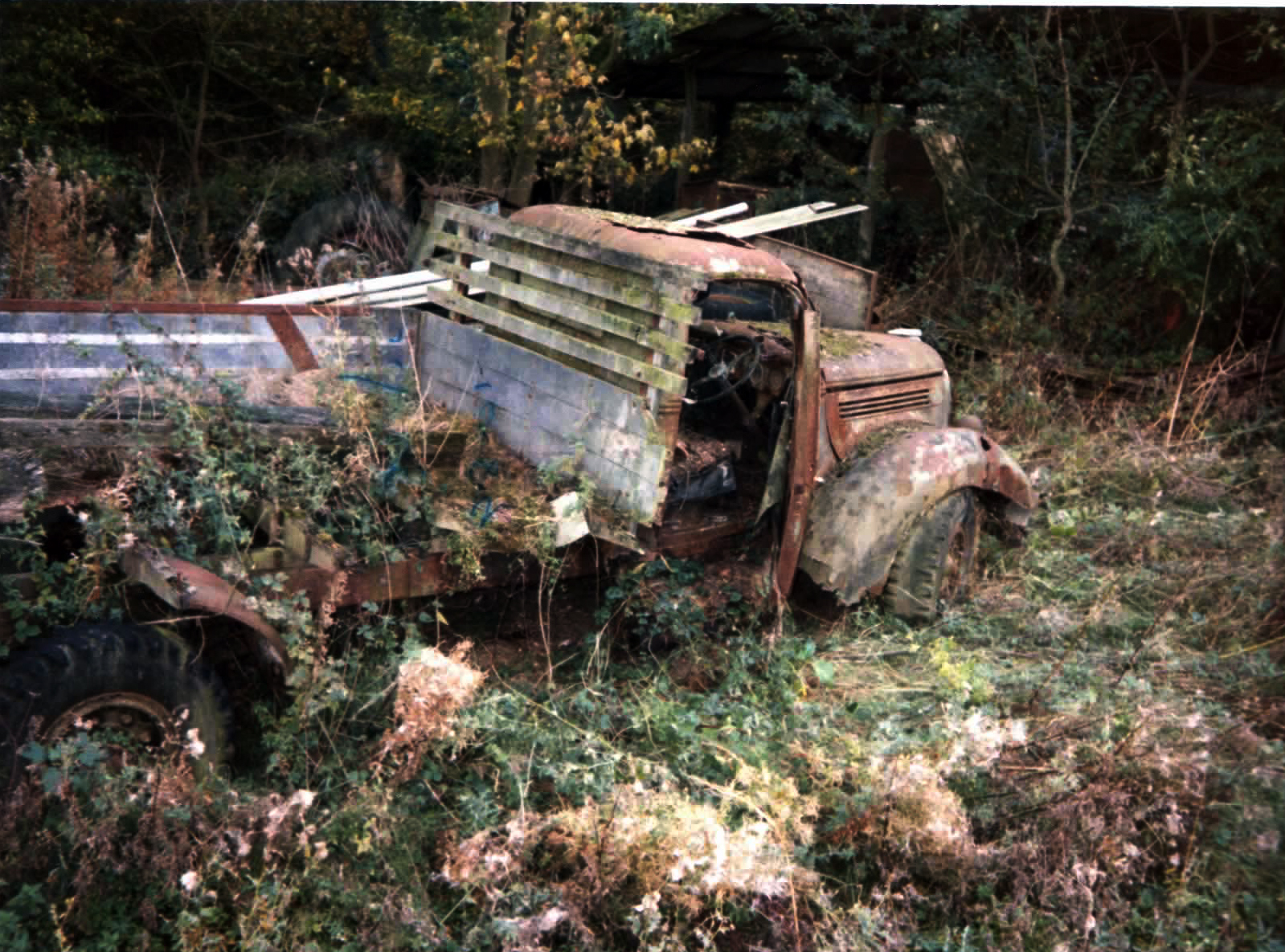
This was the rusting nightmare before it was transformed on 4th October 1989.
It had been used as a flatbed lorry at some time.
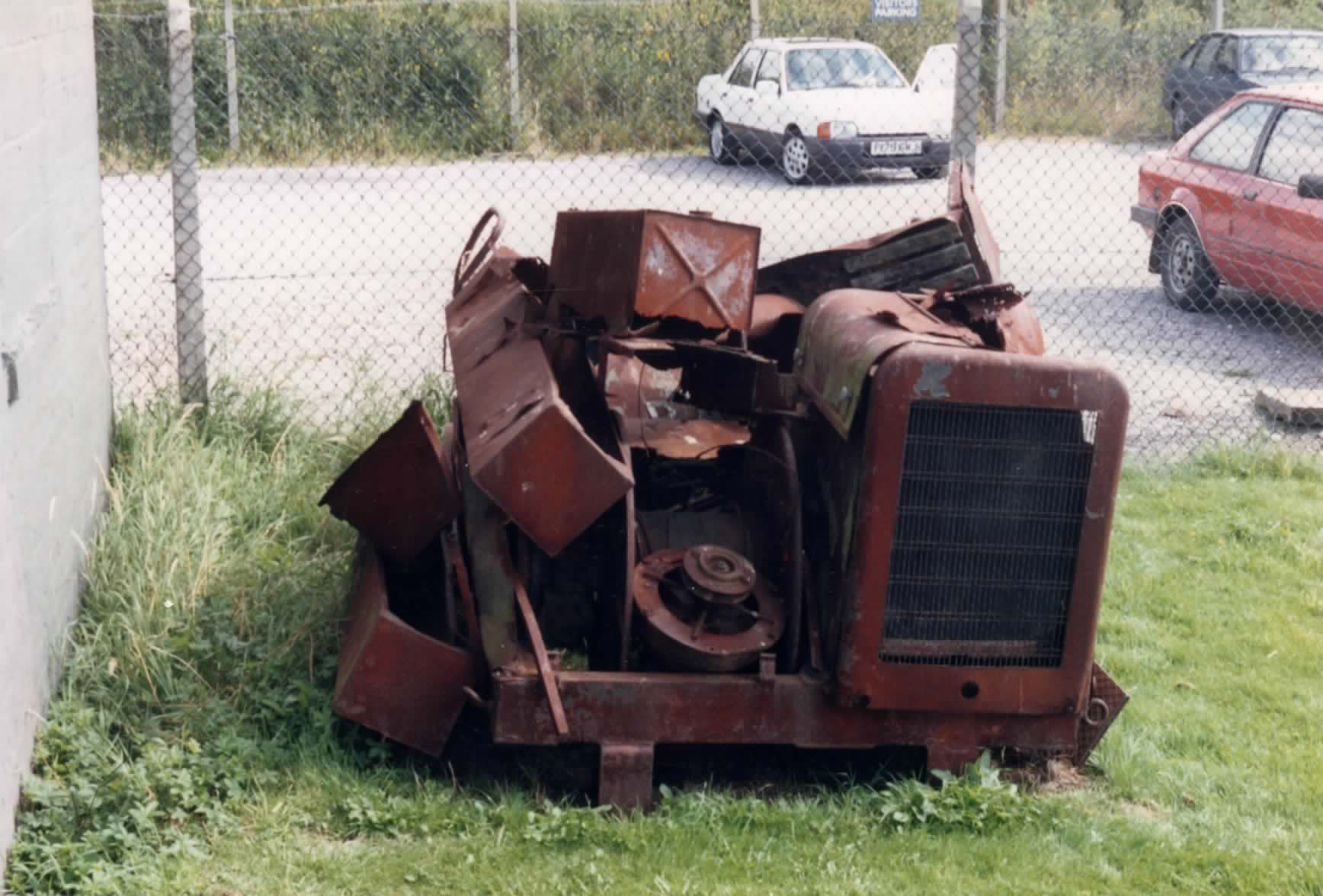
Here is more of the rusting winch awaiting transformation
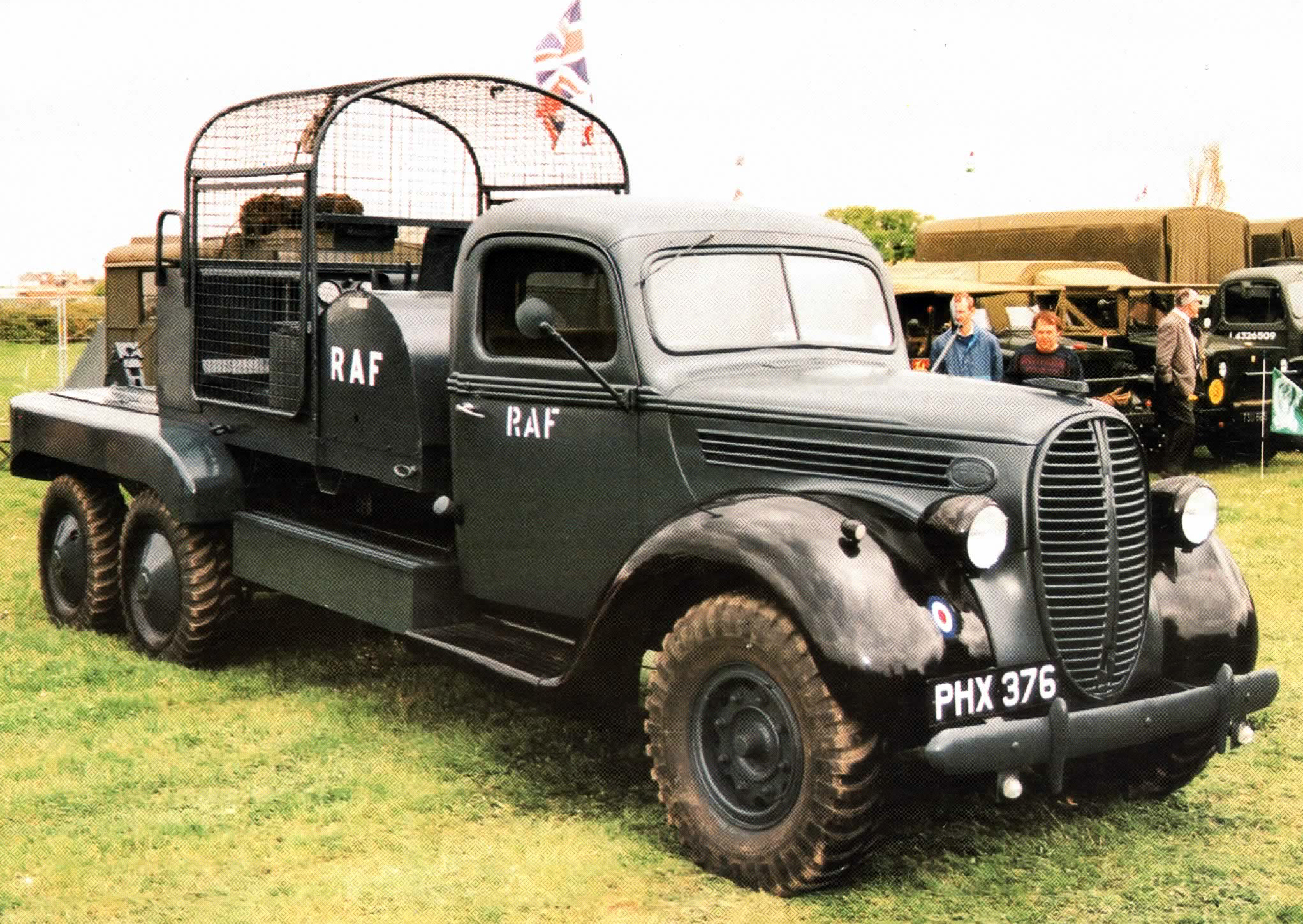
The rust has disappeared and this fantastic vehicle was the result. This was 24 feet long, with a width 6 feet 6 inches, and a weighed 5 Tons.
The Fordson "Sussex" was a six-wheeler at the back was a M B Wild & Company's Mark 6 winch with a drum capacity of 7,000 feet of 0.31-inch
diameter flying cable. There were two Ford 30 b.h.p, V8 side valve, 3.5 Litre engines: One was to drive the vehicle and the other one to drive
the winch. By keeping both engines the same it meant that there was only 1 set of engine spares needed.
Operation of the winch was done using a 5 speed gearbox The gearbox had six selector positions. 'Neutral' and 'reverse' was for paying out the
cable, the selection of gears, one to four made hauling in a process that meant considerable control was to be had on descent.
Within the cage there were foot pedals for clutch and accelerator as per a car, while the foot and hand brakes operated a "Snatch Brake Unit"
that aided control of the balloon cable. There were two dials in front of the seat in the cage. On the left the dials displayed the speed and length of the
cable in "Feet per minute", which was being let out or hauled in. It also gave an indication of the height at which the balloon was being flown.
On the right, a marking: "Tons" gave the load or tension on the cable. The operator had to use careful observation of both dials to ensure the cable
did not break and the balloon break away.
PHX 376 in black and white
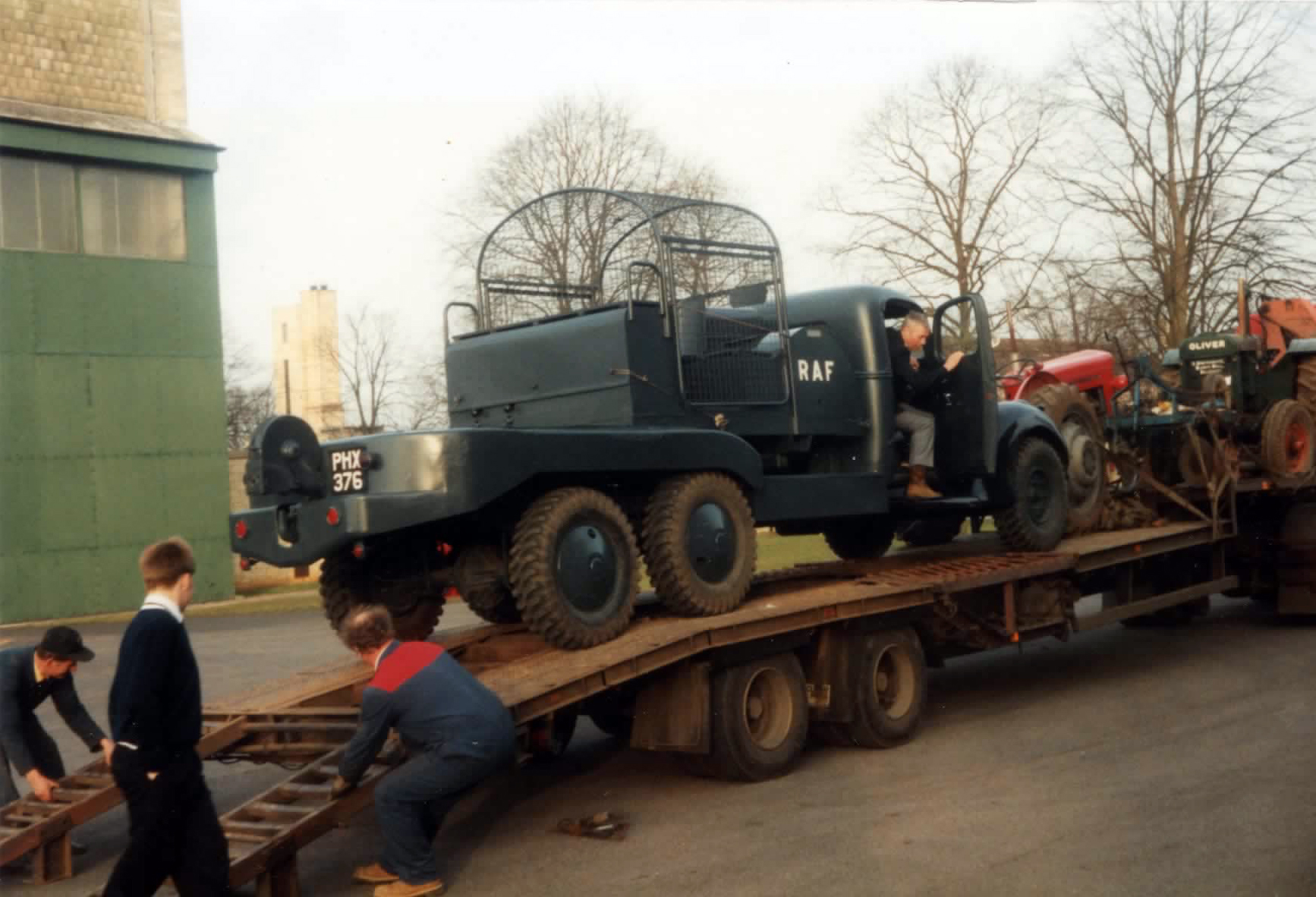
PHX 376 is being driven off the trailer. Taken at Hullavington on closure day 1st April 1995
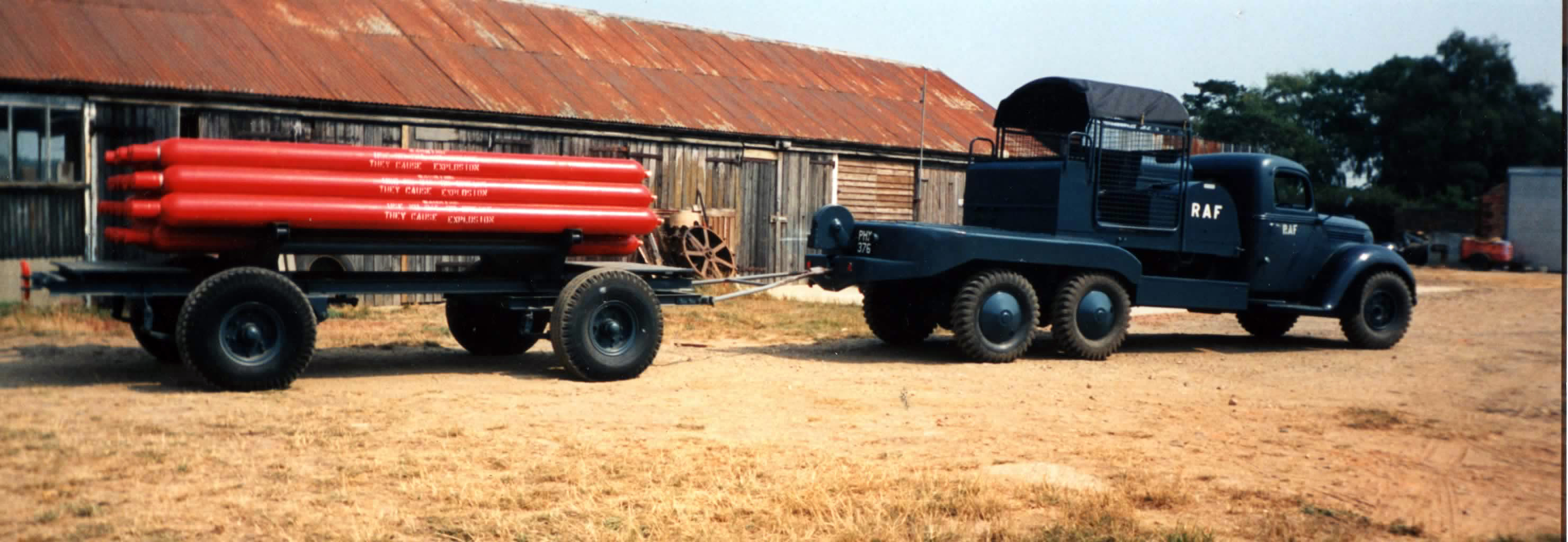
In factory condition, PHX 376 complete with gas trailer and medium pressure hydrogen cylinders is ready for the road. The hydrogen cylinders were painted red and marked to
emphasize that they could cause an explosion.
Personnel were encouraged to treat hydrogen cylinders as potentially live bombs and extreme caution was exercised in the moving, handling and storage of these.
Each cylinder was 11 foot long and 8 inches in diameter and weighed 220 lbs. There were three types of cylinders:
High pressure device that held 575 cubic feet of hydrogen gas at 3,000 lbs per square inch pressure. The shell was 0.20 of an inch thick. They are metallised all over including the valve caps.
Each one has a Air Ministry number preceded by (A).
Medium pressure device that held 400 cubic feet of hydrogen gas at 2,000 lbs per square inch pressure. The shell was 0.12 of an inch thick. They are painted red all over or metallised grey
all over with valve and end caps painted red.
Low pressure device that held 360 cubic feet of hydrogen gas at 1800 lbs per square inch pressure. They are painted red all over with a black band 4.5 inches wide and 15 inches
from the valve cap.
Cylinders were Air Ministry tested every two years and if passed had a green band painted around them.
Below are some pictures of the W.O.T. 1 Winch Vehicle RAF 22437 now at the Imperial War Museum
The W.O.T. 1 Winch Vehicle RAF 22437 now at the Imperial War Museum
The W.O.T. 1 Winch Vehicle RAF 22437 now at the Imperial War Museum
A picture at Camp Tyson U.S.A. showing a Ford Balloon Winch Vehicle 26th April 1943.